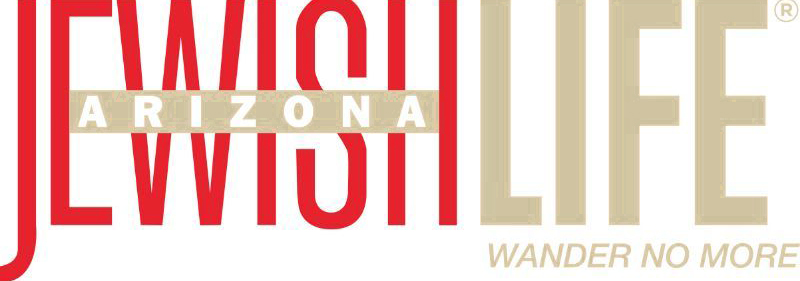The year 1913 was an interesting one. Ford Motor Company set off the mass-production industry with the first moving assembly line; the temperature in Death Valley hit 134 degrees Fahrenheit; and Grand Central Terminal reopened after being rebuilt. Oh, and a little boy named Irving Olson came into the world. Exactly 99 years later, he’d be producing amazing images of water droplets out of his home just outside of Tucson.
But let’s get back to the beginning, or somewhere around that point. When he was 14, he lived in Akron, Ohio. While he was attending school he spent some of his time repairing radios, which led to a business opportunity. By the time he was 16 he owned a radio repair shop as well as a print shop, which he eventually merged to create a company that sold radio parts via mail order. As the radio business grew, the printing business fell to the wayside, so he gave the business to his 60-year-old father to run. That printing business would eventually print a million catalogs a month, and the radio business became Olson Electronics, with more than 100 stores and 500 employees. When he was 50 years old in 1963, Olson sold the business to Teledyne.
About 12 years ago, Olson and his wife Ruth, at the urging of their family friend Kathy Unger (the current chair of the Jewish Federation of Southern Arizona Board), moved from Akron to Tucson. The change in climate was a boon for the couple, causing Olson to say that he should have moved there 50 years before. Unfortunately, Ruth passed away about a year ago, but Olson still has his two children, Stephen and Carolyn.
One thing has remained constant throughout his years, and that’s photography. He received his first camera back when he was 9, and has always dabbled in the art form. He’s always had some kind of camera in tow, particularly when going on trips overseas as he does frequently. Just prior to his wife’s passing, Olson was in Tanzania taking photos of animals, when he got word his wife was in poor health. And 40 hours later, he was at her bedside when she passed away.
Even at 99, he’s still on the road with his camera in hand. Just two months ago he was in Eastern Europe photographing people in their native costumes — well, the ones he could find, anyway. “Everyone is in jeans and sweatshirts now,” he says. Being that photography is such a passion of his, Olson has kept up on all the latest techniques and tools by reading magazines on the subject. About a year ago, he read an article in a magazine about photographing water droplets using black-and-white film. The concept intrigued him, but he didn’t like the black-and-white part — Olson wanted some color. After adding food coloring to the water, he started experimenting and the results were fascinating. How he got there, though, was quite complex. In his kitchen sits a custom apparatus that’s connected to a computer. The machine dispenses drops of water a few milliseconds apart, with each drop landing in a pool of water. The way the system works, when the first drop hits the water and subsequently splashes up approximately two inches or so, the second drop is released and — hopefully — the two collide. It’s at this intersection of the two drops that Olson takes his pictures, and the results can be quite amazing.
The process wasn’t easy to create, however. He experimented with the system for at least a month before he had an image he was happy with, but he kept persevering, confident he would get the shot he wanted. He played with every variable possible to make it happen. He’d change the temperature in the room or the temperature of the water, turn the air-conditioning on or off — it seemed like there were no easily reproducible results. But Olson is 99 years old, and he’s learned how to be patient. Plus, by shooting with a digital camera and using water drops, his consumables list is pretty short. “With a glass of water I can enjoy myself for a month or more because I only use two or three drops per picture!” he says.
Today, there is a bit of sweet science involved in his technique. Using his Nikon D800, he turns off all the lights until he has perfect darkness in his workspace. Then he triggers the mechanism, water collides and he takes his picture. It usually takes about 500 shots before that perfect image comes across his computer screen, but that’s OK, it’s just time and patience. Once the image is captured, it’s off to his computer to do the custom work. Using Adobe Photoshop, Olson cleans up the image so that any extraneous water drops that aren’t key to the presentation are deleted. The result is a photo unlike any other, each one just like a snowflake. Olson says, “I am not satisfied with the photos I took six months ago. It gets harder all the time in order to make them better and better. There is nothing like these photos in the entire world. They are unique.” In fact, they may be best compared to a Rorschach test, as each person sees something different in the water.
When he’s done with his work, the best shots are printed on 24-by-30 photographic paper and then either framed or sold to collectors. Two of his recent pieces were sold to a prestigious art gallery in New York City.
When not taking pictures, Olson is actively involved in the Tucson Jewish community. A quick stroll past the cabinets in his home reveals the dozens of awards bestowed upon him from The Tucson Hebrew Academy, Jewish Family and Children’s Services, the Jewish Federation, as well as dozens more from his time spent in Akron. This past October, Olson was presented with a crystal obelisk with a dichroic glass mezuzah affixed to it.
Recently, the Jewish Federation wanted to establish a “home” for the Jewish communities located in the northwest suburbs of Tucson. There were no synagogues in the area, and yet as the area grew exponentially, the need for one became quite large. Olson was approached to be a lead donor for the facility, and he readily agreed. On Oct. 7, the Jewish Federation Northwest in Oro Valley held its grand opening, and it wouldn’t have been possible without his generous commitment. Today, there are Torah classes, lunch-and-learns with various Tucson rabbis, mah jongg games, Kabbalah classes, and once-a-month Saturday morning services held at the new facility. He may be up there in years, but Olson doesn’t spend his days sitting still. Not only is he creating amazing art with simple materials, but he’s also an icon in the Jewish community. Not too bad for his first 99 years. Here’s to the next 99.






